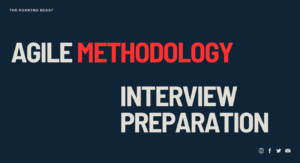Agile Scrum is a project management framework that is widely used in software development and other complex, iterative projects. It provides a structured approach to managing work in a collaborative and adaptive manner, with a focus on delivering value to customers and stakeholders.
At its core, Agile Scrum promotes flexibility, transparency, and continuous improvement. It embraces change and recognizes that requirements and priorities may evolve throughout the project. The framework enables teams to respond effectively to changes and deliver increments of work in short, fixed time periods called sprints.
Scrum, one of the most popular Agile methodologies, consists of several key elements:
- Scrum Team: A self-organizing and cross-functional team responsible for delivering the product. The team typically includes a Product Owner, Scrum Master, and Development Team members.
- Product Backlog: A prioritized list of features, enhancements, and bug fixes that represent the product’s requirements. The Product Owner is responsible for managing and refining the Product Backlog.
- Sprint: A time-boxed iteration typically lasting 1-4 weeks during which a specific set of items from the Product Backlog is selected for implementation.
- Sprint Planning: A meeting at the beginning of each sprint where the Scrum Team collaboratively determines which items from the Product Backlog will be worked on and defines the goals for the sprint.
- Daily Scrum: A brief daily meeting where team members synchronize their work, discuss progress, and identify any obstacles or impediments.
- Sprint Review: A meeting held at the end of the sprint to review and demonstrate the work completed during the iteration. Feedback from stakeholders is gathered to inform future iterations.
- Sprint Retrospective: A reflection meeting held at the end of the sprint where the Scrum Team discusses what went well, and what could be improved, and defines action items for implementing those improvements.
- Increment: A potentially shippable product component that is produced at the end of each sprint. It represents the cumulative work completed by the team during the project.
Agile Scrum emphasizes collaboration, continuous feedback, and iterative development. It allows teams to adapt to changing requirements, promotes transparency, and enables early delivery of value. By using short feedback loops and incorporating customer input, Agile Scrum helps teams deliver high-quality products that meet customer needs in a flexible and efficient manner.

